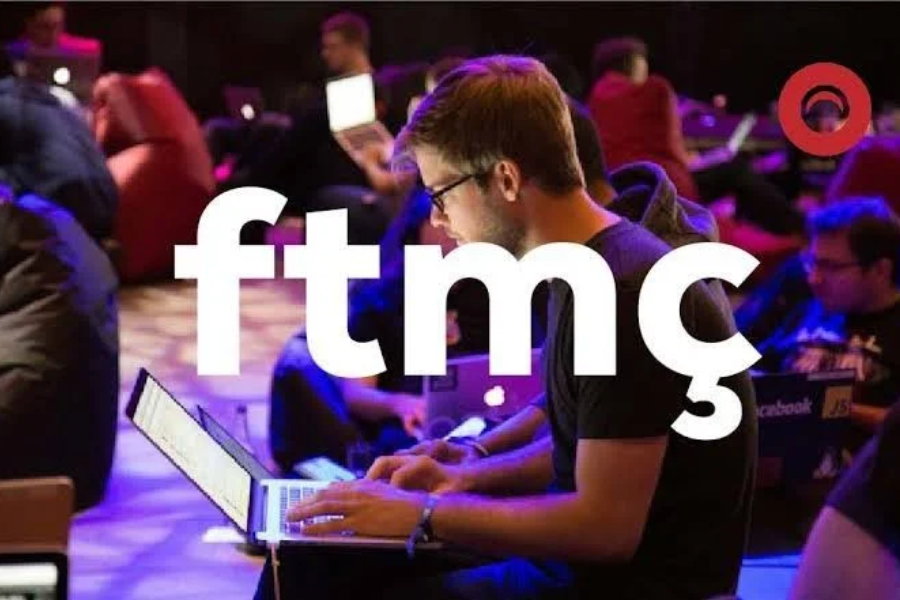Language is an intrinsic part of human identity and culture, acting as a bridge to connect people with their heritage and history. The language of ftmç, though lesser-known, holds a special place in the hearts of its speakers.
With roots that span centuries and an evolution influenced by various cultures, ftmç stands as a testament to the resilience and diversity of human expression. This article delves deep into the origins, characteristics, cultural importance, and future prospects of ftmç, examining its role in society and the efforts being made to ensure its preservation.
Origins of ftmç: A Glimpse into the Past
ftmç is an ancient language that traces its origins back to early civilizations. While the exact timeline of its creation remains a subject of academic debate, linguistic studies suggest that ftmç has been spoken for centuries, with its earliest traces found in historical records from ancient communities.
It is believed that ftmç developed in isolation, allowing it to maintain its unique identity, though it was also shaped by its interactions with neighboring languages and cultures.
The evolution of ftmç is not simply a result of internal development, but also influenced by external factors such as trade, migration, and cultural exchanges. As various empires and peoples interacted with the communities speaking ftmç, the language absorbed new vocabulary and modified its grammatical structure. Despite these influences, ftmç retained its distinct characteristics, which continue to make it an important part of the cultural fabric of its speakers today.
Historical Context: Shaping ftmç’s Identity
Over the centuries, ftmç has undergone various phases of development, with its usage spreading across regions and communities. During its early days, ftmç was primarily an oral language, passed down through generations via storytelling, rituals, and daily communication. In its written form, ftmç evolved slowly, with early texts serving as important records of cultural practices, religious beliefs, and social norms.
Historically, ftmç was spoken within specific geographic regions, where its speakers lived in relatively close-knit communities. This localized usage helped to preserve the integrity of the language, even as neighboring languages and cultures influenced its development. Today, ftmç remains a vital part of the heritage of these communities, with efforts to document and preserve it ensuring its survival for future generations.
Linguistic Influences: The Melting Pot of ftmç
The development of ftmç is not isolated but instead reflects the complex interactions between various languages and cultures. As neighboring groups and cultures came into contact with the speakers of ftmç, the language absorbed elements from other tongues, enriching its vocabulary and grammatical structure.
Linguistic studies show that ftmç has been particularly influenced by regional languages, with shared words and phrases that have similar meanings. These influences are evident in the sound system, word formation, and even sentence structure of ftmç. However, despite these external influences, ftmç has maintained its distinct identity, with its own rules and conventions that set it apart from other languages.
Characteristics of ftmç: A Unique Language in Its Own Right
The richness of ftmç lies in its distinctive characteristics, which make it both complex and beautiful. From its phonology to its syntax, ftmç displays a unique structure that is both challenging and fascinating for language enthusiasts.
Phonology: ftmç has a diverse range of sounds, including consonants and vowels that are not typically found in neighboring languages. The phonetic system of ftmç is intricate, with a focus on tonal variation and pitch, adding layers of meaning to individual words. The pronunciation of words can vary based on context and regional dialects, further adding to the language’s depth.
Morphology: The morphology of ftmç is characterized by its use of affixes and inflections to convey meaning. Unlike languages with a fixed word order, ftmç relies on the modification of root words to express grammatical relations. This flexibility allows speakers to convey a wide range of ideas and nuances through the careful selection and modification of words.
Syntax: The sentence structure of ftmç is relatively flexible, allowing speakers to express themselves in various ways. However, there are still general rules that govern word order and sentence construction. Understanding these rules is key to mastering the language and fully appreciating its beauty.
Geographic Distribution of ftmç Speakers: A Regional Language with Global Reach
ftmç is primarily spoken in specific regions where its speakers have maintained their cultural traditions and language. These communities, often located in rural or remote areas, have kept the language alive through oral traditions, storytelling, and day-to-day communication.
While the geographic distribution of ftmç is limited, the language has a global reach through the diaspora of its speakers. Many communities who have migrated to urban centers around the world continue to speak ftmç within their households and cultural groups. This spread has led to a growing awareness of ftmç, particularly among linguists and cultural preservationists, who are working to document and revitalize the language.
Importance of ftmç in Culture and Society
Language is not only a means of communication but also a vital part of cultural identity. For the speakers of ftmç, the language is deeply tied to their history, traditions, and worldview. It serves as a vehicle for storytelling, ritual practices, and the transmission of cultural knowledge across generations.
In many ftmç-speaking communities, the language plays a central role in religious ceremonies, social gatherings, and community events. The words of ftmç are woven into the fabric of daily life, with idioms, expressions, and proverbs that reflect the values and beliefs of the culture. Without ftmç, much of this cultural knowledge would be lost, which is why its preservation is crucial to the survival of these traditions.
Challenges and Preservation Efforts: Overcoming Obstacles
Despite its cultural importance, ftmç faces significant challenges in the modern world. Globalization, urbanization, and the increasing dominance of major languages have put immense pressure on minority languages like ftmç. The younger generation, in particular, is often drawn to more widely spoken languages, leading to a decline in ftmç speakers.
To counter this trend, various preservation efforts are underway. Linguists and cultural advocates are documenting the language through written texts, audio recordings, and online resources. Language revitalization programs are also being implemented to teach ftmç to younger generations and provide them with the tools they need to speak and preserve the language.
Learning ftmç as a Second Language: A Journey of Discovery
For those interested in learning ftmç, the process can be both rewarding and challenging. While formal education opportunities are limited, many language enthusiasts have turned to online resources, language apps, and community forums to learn and practice ftmç. The key to mastering the language is dedication, patience, and access to reliable materials.
Language learners can also benefit from connecting with native speakers and immersing themselves in the cultural context in which ftmç is spoken. By participating in cultural events, festivals, and community activities, learners can gain a deeper understanding of the language and its significance.
ftmç in the Digital Age: Adapting to a New Era
The rise of the internet has created new opportunities for the preservation and promotion of ftmç. Online platforms, such as language forums, social media groups, and dedicated websites, have become spaces for speakers and learners to connect, share knowledge, and celebrate the language.
Digital tools have also facilitated the creation of educational resources, such as language apps and online courses, that allow users to learn ftmç at their own pace. Through these platforms, ftmç is reaching a global audience, and efforts to document and preserve the language are being amplified in ways that were previously impossible.
Future Prospects of ftmç: A Language Poised for Revival
While the future of ftmç faces uncertainties, there is hope for its revitalization. As awareness grows and efforts to preserve the language continue, ftmç is likely to thrive in the years to come. Communities, linguists, and scholars are working together to ensure that the language remains a vibrant part of the cultural landscape.
The increasing interest in linguistic diversity and the growing movement to preserve endangered languages provide a strong foundation for the future of ftmç. By fostering a sense of pride and ownership within the community, and by utilizing modern tools to document and teach the language, ftmç is positioned to thrive in an ever-changing world.
Conclusion:
ftmç is more than just a language; it is a living testament to the history, culture, and resilience of its speakers. Its rich history, unique linguistic features, and cultural significance highlight the importance of preserving linguistic diversity in a rapidly changing world. As efforts to revitalize and promote ftmç continue, this beautiful language will remain an important part of human expression for generations to come.
FAQs
Is ftmç related to any other languages?
Yes, while ftmç shares certain linguistic features with neighboring languages, it retains a distinct identity and is not directly related to any other language.
Are there any online courses available for learning ftmç?
While formal online courses may be limited, there are various online resources such as apps, websites, and community forums dedicated to learning ftmç.
How can I contribute to the preservation of ftmç?
You can contribute by supporting language documentation projects, participating in cultural festivals, or learning and speaking ftmç yourself.
Are there any efforts to standardize ftmç grammar and spelling?
Yes, there are ongoing efforts to standardize aspects of the language, but these vary depending on community preferences and linguistic research.
What are some common misconceptions about ftmç?
One misconception is that ftmç is a dying language. In reality, there are many ongoing efforts to revitalize and preserve it for future generations.
Explore In-Depth Features and Insights at VentsMagazine


